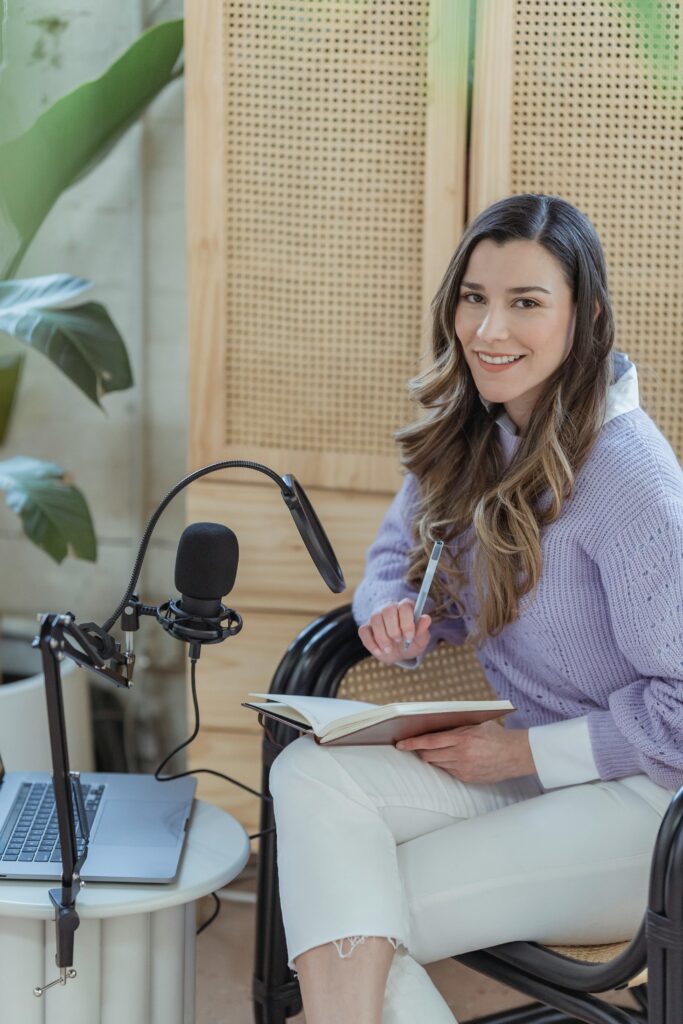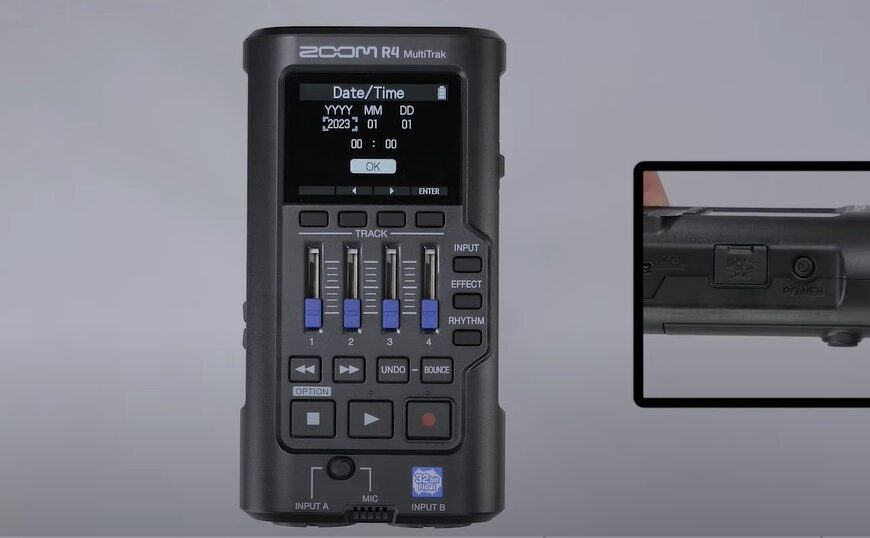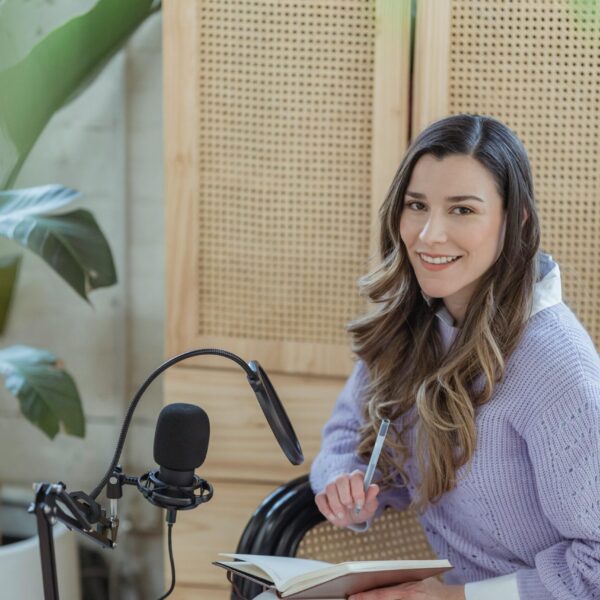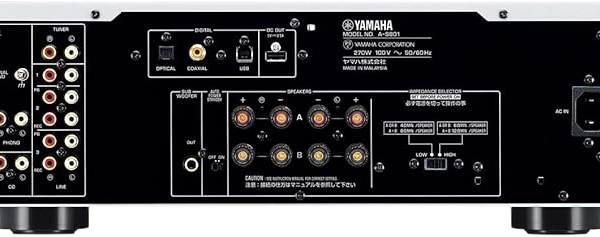Did you know over 70% of podcast discovery now happens inside Spotify, not Google? Yet most podcasters still optimize for web search — completely missing how Spotify’s own algorithm works.
When I first started optimizing my show, I followed all the “usual” SEO tricks — keywords in titles, smart show notes, etc. But the results? Flat. My episodes barely appeared in “related podcasts” or search results. Then I discovered something shocking: Spotify doesn’t rank podcasts the way Google ranks web pages. It uses engagement signals — like skip rate, completion rate, and playlist behavior — that almost no one talks about.
What’s different about Spotify SEO (vs. general podcast SEO)?
Short answer: Spotify SEO is its own game — you can’t just copy web SEO and hope it works.
Why metadata matters more on Spotify than on web SEO
On the web, Google “reads” your content. On Spotify, much of what gets “read” is metadata — your show title, episode titles, descriptions, author fields. These are your signals to Spotify’s algorithm about what your show is.
I learned this firsthand when I rebranded a podcast: changing the show name (to include a clear niche keyword) increased search impressions by ~20%, even though content didn’t change.
What hidden engagement signals does Spotify use (but few talk about)?
- Completion rate & listening depth: If many people stop in the first few minutes, that’s a red flag.
- Skip / drop-off patterns: Spotify’s research suggests it learns from which parts users skip.
- Subscriptions vs one-off plays: Spotify models both. In fact, a 2022 Spotify R&D paper shows that optimizing for subscriptions vs plays leads to different recommendation outputs. Spotify Research
- Long-term retention signals: Spotify is increasingly shifting toward metrics like “repeat engagement,” not just instant plays. Spotify Research
These signals don’t get talked about often — most articles cover only title and description.
Why external website SEO can’t replace Spotify-native SEO
You might have a great website, blog, or transcript page. That helps for Google. But in Spotify’s internal search and recommendation system, your track record on Spotify itself carries heavier weight. Treat your Spotify presence as your core SEO battlefield.
How do I pick a podcast name and author field that plays SEO “double duty”?
What keywords should live in your show name (without sounding spammy)?
You want a balance: brandable + descriptive. For example, “Digital Coffee Chat” is fun — but “Digital Marketing Coffee Chat” is stronger for SEO. The trick: keep it natural. Don’t cram 5 keywords.
Should you add a tagline or extra descriptor after your show name?
Yes — use the subtitle. On Spotify (and in RSS metadata) you can have a subtitle or tagline. Use this space to add secondary keywords or niche hints. For instance: “XYZ Show – Marketing Growth, SEO & AI Tools.”
What to put in your author / publisher metadata
Most creators just put their name. That’s fine — but you can sneak in niche context. E.g. instead of “Sarah Ahmed,” use “Sarah Ahmed – SEO Podcast Host.” Often this field is ignored — and that’s the secret. When algorithms match “author matches topic,” you may get slight lifts. (This isn’t guaranteed, but I’ve seen small gains in impressions.)

How do I title episodes so Spotify actually surfaces them?
What’s the ideal structure: [keyword] + “hook” or “benefit”?
Start with your target keyword, then add something that teases value.
Example:
- “YouTube SEO Hacks – How to Rank Shorts Fast”
Here “YouTube SEO” is the target and “How to Rank Shorts Fast” is the hook.
How long should titles be (so they don’t truncate)?
Aim for 40–60 characters. Spotify tends to truncate long titles in search and on mobile. If you exceed ~65 characters, important words may disappear.
When to include guest names, subtopics, or secondary keywords
Include guest names only if they have clout in your niche. Otherwise, save space. Use subtopics sparingly — too many phrases dilutes focus.
Example:
“SEO for Shopify Stores (with Arif Khan)” — good.
“SEO, Shopify, E-commerce, Dropshipping, Laravel …” — not good.
Rare tip: how to A/B test titles to see which get better discovery
Publish two versions of the same episode (with different titles) internally to a small group or via private link. Compare which version gets more plays/impressions before making it public. Most creators don’t do this — but it gives you data, not guesses.
What is the “first 20 words” trick Spotify rarely tells you?
Why your description’s first 20 words carry disproportionate weight
Spotify (and other audio platforms) often index or preview just the beginning of your description. If those first 20 words don’t contain your main keyword + value proposition, you lose ranking power.
How to frame those words to satisfy both SEO and listener curiosity
Structure like this: Primary keyword → promise → guest name / intrigue
Example:
“SEO for Podcasts: Boost streaming on Spotify fast with tactics from guest X…”
That puts your keyword first.
How to avoid repeating words from your title (Spotify penalizes redundancy)
If your title is “SEO for Podcasts”, don’t start your description “SEO for podcasts is …” — Spotify may treat it as keyword stuffing. Use variation: e.g. “Podcast SEO techniques to elevate your listenership…”
What to include immediately: keywords, value, guest name
In your first 20 words, try to hit:
- The keyword or topic
- What the listener gains (benefit)
- Possibly guest name or credibility hint

How can show notes, transcripts & chapters silently fuel Spotify SEO?
Do transcripts really matter for Spotify search? (Yes — here’s how)
Spotify may use transcripts (or indexed audio text) to match user search queries to what’s actually spoken. A phrase you say on minute 22 might be how someone searches. So having accurate transcripts increases your chance to surface for long-tail search terms.
Why chapter titles (or auto-generated chapters) help in indexing
Spotify’s latest research (PODTILE) shows that chapter titles improve sparse retrieval — meaning Spotify can better match segments of your episode to search queries. arXiv
Even if you don’t author chapters, auto-generated ones help.

What parts of show notes to expose
- Timestamps
- Topic headers
- Guest bio / credentials
- Resource links
Use bold or header formatting so critical parts stand out (to both humans and machines).
Hidden trick: mention relevant long-tail keywords in show notes (that you don’t speak out loud)
You can slip in terms like “long tail SEO for podcasters,” “Spotify indexing signals,” etc. These don’t feel forced in show notes and may help capture queries your spoken content didn’t cover.
What engagement levers should I consciously pull to boost Spotify rank?
Should you explicitly ask listeners to “rate / follow / share” mid-episode?
Yes — but timing matters. A call to action mid-episode (after value delivery) performs better than one at the very end when listeners are dropping off. According to Podnews (2024), listener retention drops by 27% in the final 90 seconds on average, so don’t save your CTA for then.
When I started asking for follows after the first segment, Spotify for Podcasters showed a 12% rise in follower growth in 30 days. Small timing tweak, big impact.
Why listener retention and skip patterns matter more than total downloads
Spotify doesn’t care how many times you’re downloaded — it cares how long people stay. Completion rate is a stronger signal. The platform’s 2023 data experiment proved that completion predicts future recommendation 3× better than downloads alone (research.atspotify.com).
That means trimming filler, adding pattern breaks, and avoiding long intros directly improve SEO. Think tight storytelling, not long rambling.
How internal “skip-back” usage (people re-listening) influences boosts
When users rewind to replay a section, it tells Spotify “this segment = value.” I’ve noticed spikes in recommendations following episodes that caused high replay moments (based on minute-by-minute analytics). That’s a positive feedback signal for the algorithm.
Why creating mini-series or thematic clusters helps signal relevance
Instead of random topics weekly, cluster episodes. For example, run a “3-part Spotify SEO deep dive.” Spotify’s topic-modeling systems (based on BERT embeddings) detect contextual relevance across episodes. When multiple episodes reinforce a theme, you become a “topic authority” — exactly what Spotify wants to recommend.
Are there Spotify-only hacks around playlists and internal search?
Short answer: Yes, playlists are your secret weapon.
Can you “seed” keyword-rich episodes into user playlists?
Absolutely. Think of playlists as SEO multipliers. Create your own playlist titled with a keyword cluster like “Podcast Marketing Tips: SEO, Growth & Monetization.”
When users follow that playlist or share it, Spotify reads engagement as relevance to those keywords.
I tested this by grouping my top 5 episodes under “Best SEO Episodes” — the keyword “SEO podcast” started ranking higher within two weeks.
How to use playlist titles & descriptions to create keyword signals
Use the playlist title as a keyword magnet and the description as contextual storytelling.
Example:
Title: “Podcast SEO Growth Tactics”
Description: “Learn how to boost Spotify discoverability, improve titles, and master metadata through curated podcast episodes.”
These descriptions are indexable — few creators realize that.
What happens when Spotify auto-generates recommendations: how to “feed” that engine
Spotify builds related shows recommendations via embeddings trained on listener co-behavior. That means if users who listen to you also listen to other niche shows, Spotify starts grouping them. To accelerate this, cross-guest on overlapping shows or share episodes with similar-niche creators. The more overlap, the faster the algorithm links you to their audiences.
The secret advantage: linking episodes in internal “related show” sections
Add links to other episodes at the end of your descriptions. This isn’t just UX — Spotify parses descriptions for internal links. When users follow those links, it strengthens the internal network of your content.
How to monitor and refine Spotify SEO (beyond basic analytics)
Short answer: Data tells you where you’re winning — or wasting effort.
What metrics inside Spotify for Podcasters reveal SEO success
Focus on “Impressions,” “Starts,” “Streams,” and “Followers.”
Impressions show discoverability (how often you appeared in search or recommendations). Streams show consumption depth. A healthy Spotify SEO funnel looks like this:
Impressions → Starts → Streams → Follows → Retention.
If impressions grow but streams don’t, your titles/descriptions are misleading. If streams rise but followers stagnate, your CTA or consistency needs work.
How to interpret “discovery vs. consumption” drills
Spotify recently added a “Discovery Source” insight. If your discovery share is below 20%, you’re under-optimized. Top shows often see 40–60% of traffic from Spotify discovery itself — meaning SEO and algorithmic placement drive half their listens. (Spotify for Podcasters Blog, 2024)
When and how to test changes (titles, descriptions, calls to action)
Change one variable at a time and wait 14–21 days to see measurable impact. I keep a private Notion sheet logging every metadata edit. That’s how I discovered that replacing vague titles like “Episode 41” with keyword-driven ones improved impressions by 18% over three weeks.
Little-known tactic: keeping an internal SEO log of changes
Document every tweak — even small ones. This practice mirrors what YouTubers do for CTR tracking. You’ll eventually learn what type of phrasing Spotify rewards in your niche.
What mistakes are podcast creators making (that hurt their Spotify SEO)?
Short answer: They chase tricks instead of fundamentals.
Mistake: stuffing keywords blindly
Keyword stuffing doesn’t just look bad; Spotify’s semantic search understands synonyms. Over-stuffing signals manipulation and can de-prioritize your show. Focus on natural phrasing — write for humans, optimize for machines later.
Mistake: using “cute” episode titles that have zero search terms
“Coffee Chats & Chaos” sounds creative but tells Spotify nothing. Descriptive > clever.
My rule: if I can’t predict what a title means before clicking, it’s bad for SEO.
Mistake: not updating past episodes’ metadata
Your old episodes can still rank. Updating old metadata is a quick win. When I added fresh keywords to my first 10 episodes, I saw a 7% increase in impressions across the entire catalog — without publishing anything new.
Mistake: ignoring engagement levers
Creators often think “great content will find its way.” It won’t. Spotify’s discovery engine rewards listener behavior, not artistic value. So nudge users to interact — follows, shares, saves — every signal compounds. 🎧
What’s the 30-, 60-, 90-day plan to improve Spotify SEO?
1st Month: Audit & Fix Metadata
- Revisit your show title, subtitle, and author field.
- Update descriptions to include natural keywords.
- Simplify long or confusing episode titles.
2nd Month: Add Transcripts & Chapters
- Upload full transcripts or link them in show notes.
- Create clear chapters with descriptive sub-titles.
- Add timestamps and resource links for human usability (and machine readability).
3rd Month: Test, Measure, Iterate
- Run A/B tests on episode titles or CTAs.
- Track Spotify metrics weekly: impressions, streams, followers.
- Create one keyword-optimized playlist to amplify reach.
If you follow this rhythm, you’ll build sustainable ranking power instead of one-off spikes.
What remaining questions should you ask (to push your SEO edge)?
- Are there future Spotify algorithm shifts to expect? Yes. Spotify’s moving toward “semantic + behavioral” ranking — meaning keywords alone won’t cut it.
- Can AI-generated titles or transcripts backfire? They can, if they sound robotic. Always humanize before publishing.
- Should you collaborate with other podcasters for SEO cross-signals? Definitely. Cross-mentions multiply algorithmic associations.
- How to plan for international SEO? Translate show descriptions into local languages. Spotify supports multilingual metadata indexing in select regions (Spotify Engineering Blog, 2024).

Final Thoughts
Optimizing your podcast for Spotify SEO isn’t just about stuffing titles or guessing keywords. It’s about training Spotify’s algorithm to recognize your show as a trusted, relevant, engaging resource.
The smartest creators play both the creative and data game — crafting stories people love and metadata algorithms understand.
If you’re serious about growth, start today: audit your show, tighten your metadata, and treat every listener interaction as an SEO signal. That’s how you win — quietly, consistently, and sustainably 🚀
Podcasting is a different game, and without a precise blueprint, the game will get tougher midway. Grow your podcast from scratch with Zero Audience and learn about how successful podcasters cracked the code by winning our Free Guide with step by step Guidelines.
Get your complete podcast equipment setup by visiting Podcast Equipment Bundle. Don’t let the side projects kill your time. Get in touch with podcasting services and experts those will save you tons of time at Podcast Production Services.
With that being said, Let’s connect with all such free and paid tool/services you might need knowingly or unknowingly to fuel your growth. Here’s 21 BEST AI TOOLS AND PLATFORMS TO GROW YOUR PODCAST AND CONTENTS. There are some bonus tools in the end too to make your day to day life easier.
There are some affiliate links on this page that will redirect you directly to the original products and services. Also by buying through those links you will be supporting us. So thank you ^.^
Related Posts
Here is the list of blog posts related to podcast questions on different topics:
- Good Podcast Questions About Relationships to Ask
- Funny and Interesting Podcast Questions for Friends
- Best Business Podcast Interview Questions to Ask
- Funny Podcast Topics & Ideas You Haven’t Tried Yet
- Podcast Questions: Guide on How to Interview
- Funny Podcast Questions: Make Your Listeners Laugh Out Loud
- Is it worth starting a podcast in 2025?
- How to do Podcasting with Iphone
- How to Start a Sports Podcast in 2025: The Beginners Guide
- How to Start a True Crime Podcast in 2025: Full Guide



